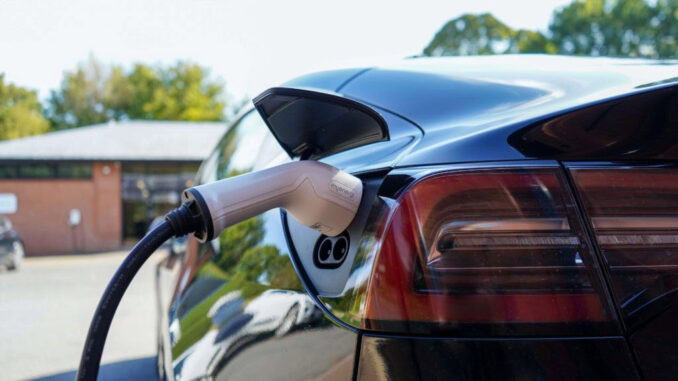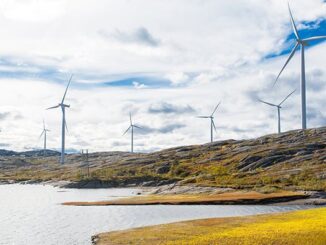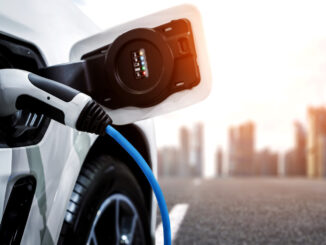
Next-generation clean energy technologies are reducing overall global energy demand and helping to make the energy supply side climate neutral. 2022, by all accounts, will be the year that makes the energy mix cleaner, more secure, and more competitive.
To fulfill optimistic forecasts, energy investments this year will need to accentuate risk/reward performance ratios by demonstrating reliability across a broad portfolio of renewable energy solutions. In line with the “do no harm” principle for the environment, actions for all next-generation clean energy technologies must improve the environmental sustainability of the technologies, deliver products with reduced greenhouse gas emissions, and improve environmental performance regarding water use, circularity, pollution, and ecosystems.
Activity is expanding exponentially in next-generation technologies. For example, energy industry stakeholders are looking to integrating more wind and solar into the electric grid. Private investment and pilot projects combined with federal research support is expediting commercialization of emerging technologies like advanced batteries and other forms of long-duration storage. These technologies can provide zero-carbon electricity and longer-term seasonal electricity storage, ease grid congestion, stem renewable curtailment, boost reliability, and facilitate integration of solar and wind into the grid while supporting goals for 100% clean energy.
What’s an appealing 2022 equation that will create viable renewable services and technologies?
- A balance of diverse, affordable, secure, and sustainable renewable energy technologies and services improves competitiveness in global value chains and their position in growth markets.
- The supply of energy to households and industries is uninterrupted and generally achieved through a high penetration of variable renewables and other new low carbon energy supply.
- These next-generation clean energy technologies provide major opportunities to replace or substitute carbon from fossil origin in the power sector and in other economic sectors such as heating/cooling, transportation, agriculture, and industry.
- Large scale and decentralized deployment creates the pathway for more jobs than the fossil fuel equivalent.
Next-Generation Clean Energy: Zooming in on Solar
Interest in next-generation clean energy technologies is evident across many sectors. The solar industry, particularly, is reinventing itself in ways that continue to increase its appeal.
After an 85% cost decline over the past decade, solar photovoltaic (PV) systems are among the most cost-competitive energy resources in the market, exploring new configurations and business models. 2022 is poised to be the year of industry-growing solar-plus-storage buildouts, exploring floating solar PV modules, and expanding community solar projects to new markets. Research indicates that pairing storage with solar offers cost synergies, operational efficiencies, and the opportunity to reduce storage capital costs with the solar investment tax credit.
Community solar projects in US markets are emerging due to new policies for community solar in 22 states plus Washington, DC. This trend is making news because over half of US households unable to purchase rooftop solar due to lack of sufficient sun, credit access, homeownership, or other factors. These programs allow residential customers to enjoy the benefits of shared solar power. Indeed, the incentive to develop renewable energy projects with community participation and ownership is a key ingredient of energy transition. Grid-connected communities are most successful when government tools are designed to support community energy, and government policies and other instruments can pose barriers and/or opportunities for community energy development. Studies suggest these should include payment-based, grid access, environmental protection, and community planning and capacity.
Floating solar photovoltaics (FSPV) are also gaining attention in the US as several developers are exploring these projects either separately or as hybrids with hydro, which could benefit from a shared substation and transmission.
What’s New with Wind?
Transmission development, which is key for connecting new, often remotely located renewable energy capacity to electricity consuming centers, is expected to be an important part of the renewable energy industry’s agenda in 2022. The Energy Information Administration (EIA) revealed planned deployments for 21.5 GW of solar and 7.6 GW of wind in the US in 2022. For utility-scale solar, that would surpass the 15.5 GW of solar additions in 2021.
Policy and regulatory support, investments, and innovation will likely help unlock progress, which has often been stymied by siting and permitting delays due to opposition from some utilities, landowners, and environmental groups.
About 844 GW of proposed capacity — 90% of which is renewables or energy storage — is stuck in transmission interconnection queues. This holds especially true for offshore wind, which is poised for significant growth and must be connected to coastal infrastructure. Both enhancing the capacity of existing lines and building new lines could be key in solving the transmission challenge. In fact, 76% of the power and utility companies that responded to a survey say that they are either planning or depending on new transmission projects to boost renewable energy access.
Solar + Wind = Winning Next-Generation Clean Energy Technologies
The momentum behind the solar and wind energy transition continues to grow, according to a recent report from S&P Global Market Intelligence. The report finds that as this build out occurs, utilities and the wider energy industry continue to find ways to finance, build, and operate the necessary infrastructure to support these assets and address those that get left behind.
All signs point to 2022 as a year in which US solar and wind deployments will hit new records. Key highlights from the report include:
- As much as 44 GW of solar and 27 GW of wind is planned to be installed in 2022 along with over 8 GW of battery storage, facilitated by the creation of dedicated programs such as virtual power purchase agreements and green tariffs.
- Early plant retirement costs due to the energy transition will present challenges for utilities and state regulators with 29 GW of coal retirements planned for 2020 through 2025.
- US utility capex is expected to remain on the upswing, with investments in upgrading and modernizing the country’s aging energy and water infrastructure reaching $63 billion and utility renewables spending surpassing $14 billion in 2022.
- With the U.S. economy challenged by fallout from the COVID-19 pandemic, the averages of the state-authorized electric, gas and water utility ROEs fell to their lowest levels on record in 2020 and are likely to remain near that level for 2021 and 2022, despite potential rising interest rates and the specter of inflation.
- Water and wastewater utility M&A has increased in 2021, and is expected to accelerate in 2022, as investor-owned companies target municipal system acquisition targets.



